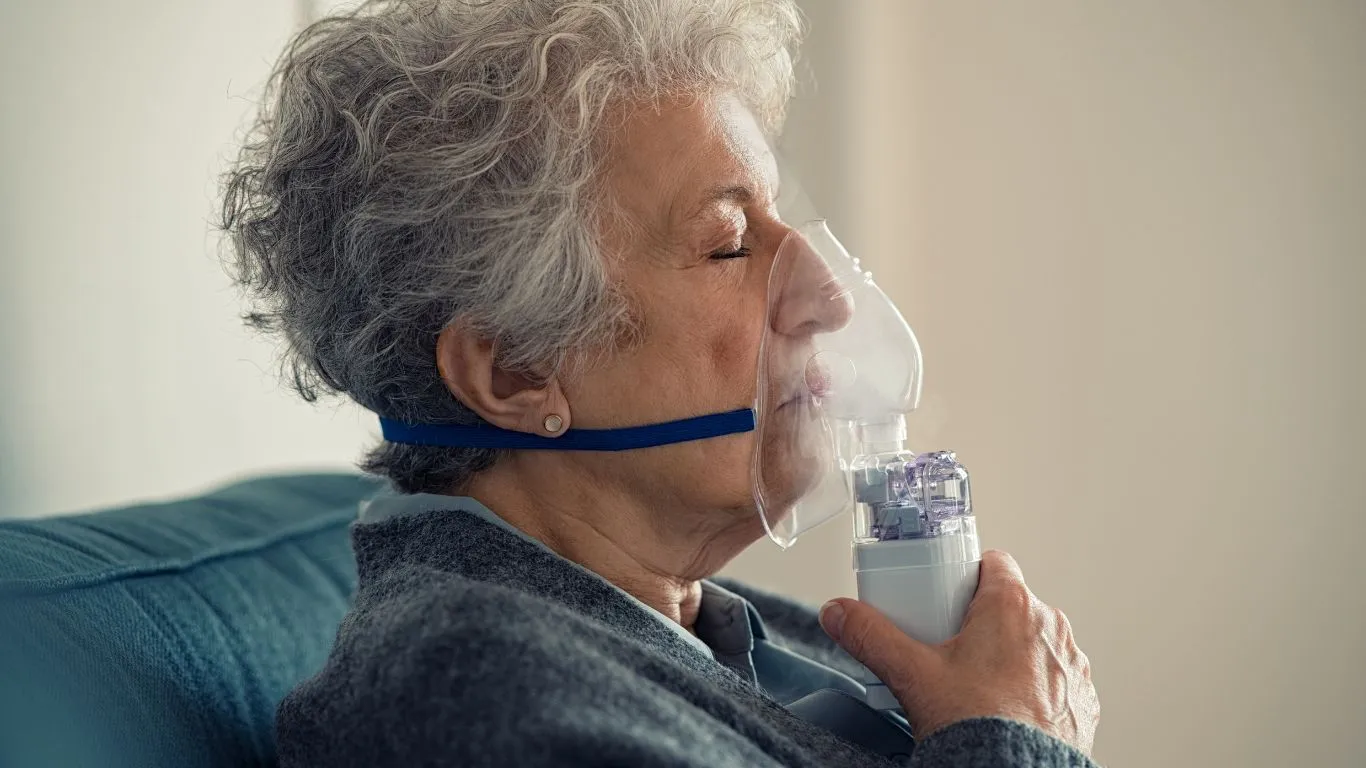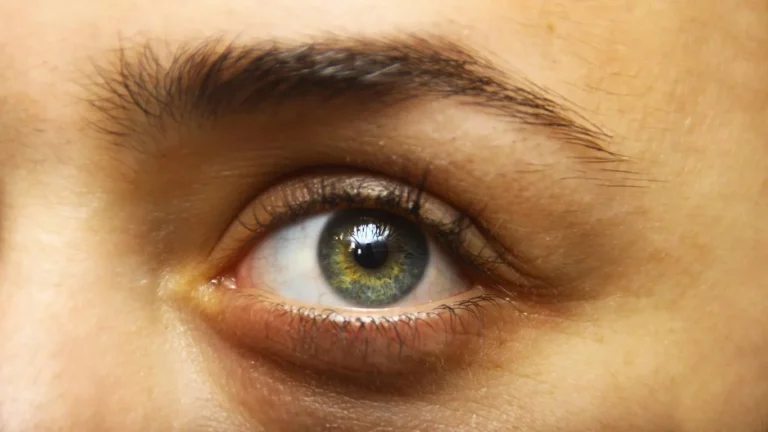Can Asthma Cause Postnasal Drip? Shocking Truth You Need to Know!
Can asthma cause postnasal drip? If you’ve ever found yourself constantly clearing your throat or waking up with that annoying feeling of mucus trickling down the back of your throat, you might be wondering if your asthma is to blame. As someone who has spent years studying and treating respiratory conditions, I’ve seen firsthand how these two issues intertwine. And let me tell you—it’s not always as straightforward as you might think!
Understanding the Connection Between Asthma and Postnasal Drip

Many people associate asthma with just wheezing and shortness of breath, but respiratory conditions rarely exist in isolation. Postnasal drip—that constant feeling of mucus running down your throat—often pops up as an unexpected companion. But why does this happen?
Here’s the deal: asthma is a chronic inflammatory condition that affects your airways. When those airways become inflamed, your body produces excess mucus as a defense mechanism. This mucus can accumulate and start to drip down the back of your throat, leading to that scratchy, irritating sensation.
Inflammation: The Common Culprit
Inflammation is the underlying issue in both asthma and postnasal drip. When your airways are inflamed due to asthma, your body may also trigger an inflammatory response in your nasal passages. This can lead to excess mucus production, congestion, and—you guessed it—postnasal drip.
- Asthma-related inflammation makes your airways more sensitive.
- Nasal inflammation (often from allergies) increases mucus production.
- Dripping mucus down the throat can trigger coughing and throat clearing.
Symptoms That Overlap: Is It Asthma or Postnasal Drip?

One of the trickiest things about these conditions is that their symptoms often overlap. In my experience, patients sometimes assume their persistent cough is from asthma, when in reality, postnasal drip is the real culprit.
Let’s break down the symptoms of each:
Asthma Symptoms
- Wheezing or a whistling sound while breathing
- Shortness of breath or tightness in the chest
- Frequent coughing, especially at night
- Increased mucus production in the airways
Postnasal Drip Symptoms
- A feeling of mucus dripping down the throat
- Frequent throat clearing
- A chronic dry cough (especially at night)
- Hoarseness or a sore throat
Notice how both conditions share coughing as a symptom? That’s why so many people mix them up. But here’s a key difference: if your cough gets worse when lying down, postnasal drip may be the real issue. On the other hand, if your cough worsens with exercise or allergens, asthma is more likely the cause.
Can Asthma Treatments Make Postnasal Drip Worse?

Now, this is something I’ve had a lot of patients ask me about. If you’re using an inhaler for asthma, could it be making your postnasal drip worse? The answer is—possibly.
How Inhalers May Contribute to the Problem
Some asthma medications, particularly inhaled corticosteroids, can cause throat irritation and dryness. When your throat gets dry, it may actually increase the sensation of mucus dripping down.
- Dryness from inhalers: Steroids can dry out the throat, making mucus feel more noticeable.
- Increased mucus production: Some medications may cause minor throat irritation, leading to excess mucus.
- Possible acid reflux: Certain asthma meds relax the esophagus, increasing the risk of acid reflux, which can mimic postnasal drip.
Pro Tip: If you use an inhaler, always rinse your mouth afterward. This helps wash away any lingering medication that could contribute to irritation.
So, if you’re struggling with both asthma and postnasal drip, your treatment plan might need some adjustments. But don’t worry, I’ll dive deeper into solutions in the next sections.
How to Tell If Your Postnasal Drip Is Caused by Asthma

At this point, you might be wondering, “Okay, I have both asthma and postnasal drip symptoms, but how do I know if they’re connected?” Trust me, you’re not alone. A lot of my patients have struggled with this very question, and I always tell them—the key is paying attention to patterns.
Ask Yourself These Questions
- Do your symptoms flare up when you’re exposed to allergens? If pollen, pet dander, or dust trigger both your asthma and postnasal drip, the two are likely linked.
- Does your cough worsen at night? Postnasal drip tends to be more noticeable when lying down, while asthma-related coughing can also spike due to airway constriction.
- Do you experience chest tightness? If your symptoms include wheezing and a tight feeling in your chest, asthma is playing a bigger role.
- Do antihistamines or nasal sprays help? If allergy medications reduce your postnasal drip, then allergies—not asthma—might be the main culprit.
From what I’ve seen in my years working with respiratory patients, it’s rarely one or the other—it’s usually a mix of both. That’s why treating both conditions effectively is so important.
Best Treatments for Postnasal Drip Caused by Asthma

Now, let’s get into the real deal—what you can actually do about it. The best way to manage postnasal drip when you have asthma is to address both conditions at the same time. That means reducing inflammation in your airways and managing mucus production.
1. Adjust Your Asthma Medications
If you’re using a steroid inhaler, make sure you’re rinsing your mouth after each use. This can reduce the risk of throat irritation and dryness, which can worsen postnasal drip.
- Use a spacer: This helps deliver medication directly to your lungs and minimizes throat irritation.
- Talk to your doctor: If you suspect your inhaler is making things worse, your doctor might adjust your dosage or switch you to a different type of medication.
2. Try Nasal Irrigation
One of my go-to recommendations for patients dealing with postnasal drip is a simple saline rinse. A neti pot or saline spray can help clear out excess mucus and reduce irritation in your nasal passages.
- Use sterile or distilled water (never tap water).
- Gently rinse your nasal passages once or twice a day.
- Follow up with a nasal spray if needed for extra relief.
I can’t tell you how many patients have come back and told me this simple step made a world of difference for their postnasal drip!
3. Manage Allergies (If They’re a Factor)
If allergies are fueling the fire, managing them will help both your asthma and postnasal drip. Some effective allergy treatments include:
- Antihistamines: These can help dry up excess mucus and reduce inflammation.
- Nasal corticosteroids: These reduce swelling in your nasal passages, making it easier to breathe.
- HEPA air purifiers: Keeping allergens out of your home can significantly reduce symptoms.
When I started using a HEPA filter in my own home, I noticed a huge difference in my allergy symptoms—it’s something I always recommend to my patients who struggle with both asthma and postnasal drip.
Lifestyle Changes to Reduce Symptoms

Beyond medication and treatments, small lifestyle tweaks can also go a long way in managing symptoms. Here are some of my top tips:
Stay Hydrated
Drinking enough water helps thin out mucus, making it easier for your body to clear it out naturally. I always tell my patients to keep a water bottle with them—especially during dry seasons.
Use a Humidifier
If the air in your home is dry, your throat and nasal passages can become irritated, making postnasal drip worse. A cool mist humidifier can help keep things balanced.
Avoid Triggers
Common irritants like smoke, strong perfumes, and dust can make both asthma and postnasal drip worse. Try to minimize exposure as much as possible.
Elevate Your Head While Sleeping
Sleeping with your head slightly elevated can prevent mucus from pooling in your throat overnight, reducing that annoying drip sensation.
These changes may seem small, but when combined, they can make a noticeable difference in managing your symptoms.
So, if you’ve been dealing with the frustrating combination of asthma and postnasal drip, know that you’re not alone—and there are solutions that can help. The key is finding the right balance of asthma management, nasal care, and lifestyle adjustments.
When to See a Doctor About Asthma and Postnasal Drip

Alright, let’s get real for a second. We all have those moments where we think, “It’s not that bad, I can deal with it.” But trust me, when it comes to asthma and postnasal drip, waiting too long to get help can make things worse. I’ve seen many patients suffer for months—sometimes years—before finally seeking medical advice.
Signs You Should Make an Appointment
If you’re experiencing any of the following, it’s time to pick up the phone and schedule a visit with your doctor:
- Persistent coughing that doesn’t improve with asthma medication or allergy treatments.
- Shortness of breath that’s worsening, even when you’re not active.
- Wheezing that doesn’t go away, especially at night.
- Thick, discolored mucus (yellow or green), which could indicate a sinus infection.
- Frequent sore throats or hoarseness that lingers despite treatment.
- Asthma symptoms that suddenly get worse, which could mean an impending asthma attack.
From my personal experience, the sooner you address the issue, the easier it is to manage. Ignoring symptoms can lead to more complications, and nobody wants that.
Preventing Future Flare-Ups

So now that we’ve talked about treatments and when to see a doctor, let’s focus on the long game: prevention. Because let’s be honest—dealing with postnasal drip and asthma symptoms constantly is exhausting. The good news? There are ways to reduce your chances of flare-ups.
1. Keep Your Environment Allergy-Free
Since allergens are a major trigger for both asthma and postnasal drip, keeping your living space clean can make a huge difference.
- Use hypoallergenic bedding to reduce exposure to dust mites.
- Vacuum and dust regularly to keep allergens at bay.
- Invest in an air purifier (HEPA filters work best for capturing allergens).
- Keep windows closed during allergy season to prevent pollen from getting inside.
One of my patients made the switch to hypoallergenic pillowcases and reported a noticeable improvement in their nighttime symptoms—sometimes, the little things make a big impact.
2. Maintain a Healthy Diet
Believe it or not, what you eat can influence both asthma and postnasal drip. Certain foods can either help reduce inflammation or make it worse.
Foods to Include:
- Omega-3-rich foods (like salmon and flaxseeds) to fight inflammation.
- Vitamin C-packed fruits (oranges, bell peppers) to boost immunity.
- Warm liquids (herbal teas, broths) to thin out mucus.
Foods to Avoid:
- Dairy (for some, it can increase mucus production).
- Processed sugars, which can contribute to inflammation.
- Fried foods, which may trigger asthma symptoms.
Everyone’s body reacts differently, so it’s worth experimenting to see what works best for you.
3. Stay Hydrated and Use Steam Therapy
We talked about hydration before, but it’s worth emphasizing again. Drinking plenty of water helps keep mucus thin and easier to clear from your throat.
Steam therapy is another great trick I swear by:
- Boil a pot of water.
- Pour it into a bowl.
- Add a few drops of eucalyptus oil (optional).
- Place a towel over your head and inhale the steam for 5-10 minutes.
I’ve used this method personally when my sinuses feel blocked, and it works wonders. Just be careful with the hot water!
Final Thoughts
So, can asthma cause postnasal drip? Absolutely. The inflammation from asthma can lead to excess mucus production, triggering that annoying drip down your throat. But the good news? You don’t have to suffer through it. With the right treatments, lifestyle changes, and preventive measures, you can keep both conditions under control.
As someone who has worked with countless patients struggling with these symptoms, I can tell you this: awareness is key. The more you understand the connection between asthma and postnasal drip, the better you’ll be able to manage your symptoms and improve your quality of life.
If you found this article helpful, don’t hesitate to share it with someone who might be dealing with the same issue. And as always, if your symptoms persist, reach out to a healthcare professional for personalized advice.
References
- WebMD

Bianca Nala is a compassionate Nurse Practitioner with a strong background in primary and respiratory care. As a health writer for Healthusias.com, she combines her clinical expertise with a talent for clear, relatable storytelling to help readers better understand their health. Bianca focuses on topics like asthma, COPD, chronic cough, and overall lung health, aiming to simplify complex medical topics without losing accuracy. Whether she’s treating patients or writing articles, Bianca is driven by a single goal: making quality healthcare knowledge accessible to everyone.







